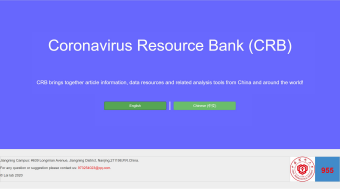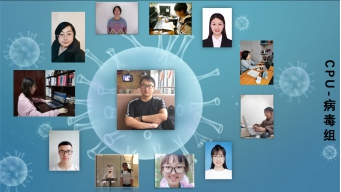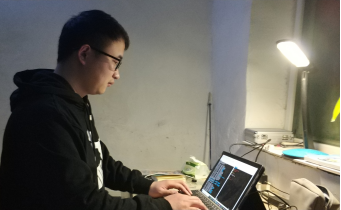

March 26, China Pharmaceutical University, Nanjing: Sun Qingrong, Class of 2018 PhD candidate in pharmacology from the School of Basic Medicine and Clinical Pharmacy, led a 11-person undergraduate student team to successfully develop a coronavirus resource database. The database platform integrates more than 12,000 Chinese and foreign relevant literature index information related to coronavirus, virus-related data, and virus research-related analysis tools. Analysis of the clinical characteristics of 115 children with novel coronavirus infection, a case-control study of factors related to the 2019 novel coronavirus infection among medical staff in Wuhan Tongji Hospital, and the effect of lopinavir/ritonavir on the blood lipid levels of patients with novel coronavirus pneumonia…The relevant literature spans more than 50 years of research, and the team took 32 days to complete the research.

More than 50 years of coronavirus-related literature
Opening the Coronavirus Resource Database website to see the documents, patents, and data resources related to Coronavirus research at a glance. According to Sun Qingrong, the research reports and review papers in the database span from 1965 to 2020, which can facilitate the majority of scholars to quickly and easily find the new coronavirus. The relevant research literature of coronavirus, including the origin, research history, research process, research hotspot, etc. of the coronavirus, promotes the cross integration of pharmacy, chemistry, biology and other disciplines.
These massive literature research data, the database did not accept all orders, we removed some commentary and strategic articles, only retained academic research, academic reviews, case analysis, data platforms, analysis tools, etc., in order to better Concentrate effective academic resources.” Sun Qingrong said that the coronavirus resource database cost only 32 days from its establishment to completion. As of March 22, the database had collected 9556 English research articles and 3052 Chinese research articles index information, 25 English data resource platform, 6 Chinese data resource platforms and 18 major analysis tools related to virology, etc.
Why develop a database of coronavirus resources? Sun Qingrong said that the inspiration for this development came mainly from the mentor and president of China Pharmaceutical University, Prof. LAI Maode. After the outbreak, Prof. LAI encouraged students to conduct more research on the new coronavirus from the perspective of medical big data, including basic multiple sequence alignment, evolutionary analysis, and analysis of the ACE2 protein, an important target of the new coronavirus.

Continue to update database resources
Sun Qingrong quickly formed a team with 11 like-minded undergraduates in pharmacy, clinical pharmacy, Chinese pharmacy, biopharmaceuticals and other majors of China Pharmaceutical University. They looked up literature, sorted out information, and built a website together...
Sun Qingrong said that the establishment of the coronavirus resource database has been twists and turns. Various difficulties have been encountered in the construction of the basic environment of the database server, data integration, and information display.
“The construction of the basic environment of the database server requires relevant professionals. The integration of data requires manual retrieval and screening, and the workload is huge. There are also problems with library resources that require professional help. In addition, during the epidemic we worked at home. Due to the differences in team members’ home networks, everyone’s network optimal time period is also different, and coordination and unification will be a bit difficult.” Sun Qingrong said.

There are always more solutions than difficulties. The number of domestic resources is relatively small, so they used manual retrieval to search the documents of CNKI and Wanfang database one by one; for foreign resources, they use a combination of API and manual retrieval to achieve data integration and storage.
During the development period, the database was also guided and supported by teachers from the school’s library and information center. The establishment of the team, the construction of the basic environment, and the testing of the database would not be completed without the help of teachers.
Sun Qingrong said that in the future, the team will continue to update database resources and add more data analysis and data resources related to coronavirus-related drugs.
Source: Science and Technology Daily on March 26, 2020
Correspondent: Jiang Chen, Jiang Jiatong
Reporter: Jin Feng